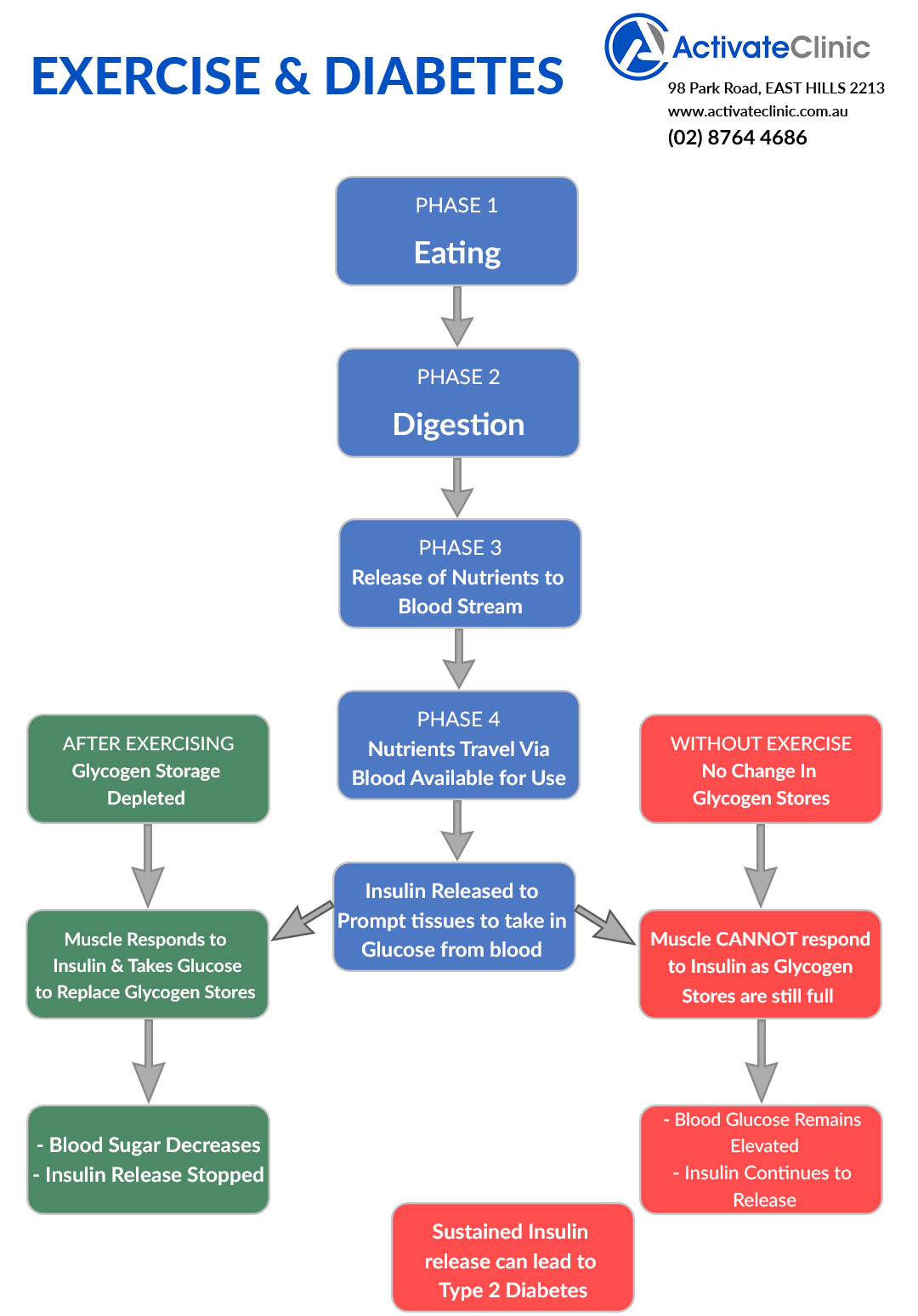Exercise and Type 2 Diabetes
We have developed a step by step ultimate guide to reverse diabetes
or keep reading…
Type 2 Diabetes is one of the most common lifestyle diseases affecting 415 Million people globally and 1.7 Million Australians.
Participation in regular exercise is vital to continue to prompt and train the muscles to efficiently uptake glucose (sugar) from the blood thus reducing the concentration of glucose in the blood.
Reducing blood glucose can help preserve normal pancreas function, which can prevent or manage type 2 diabetes.
Key Concepts
1. Glucose – Is a simple sugar that is prominent in plants and animals.
2. Blood Glucose – Carbohydrates consumed are eventually broken down and released into the blood as blood glucose. Blood glucose (blood sugar) refers to the concentration of glucose in the blood.
3. Insulin – Insulin is a hormone released by the pancreas. Insulin serves to inform body’s tissues (organs & muscles) that there is available glucose in the blood ready to be used.
4. Glycogen – The storage form of glucose. Imagine the glucose being put into Tupperware and placed on the shelf for safekeeping until needed. Glycogen is mostly found in muscle and the liver.
Eating
Following ingestion of food, the body works hard to break down (digest) the food to the core nutrients that can be used to keep our body healthy. After the food is digested, the nutrients are released to the blood to be transported around the body.
Glucose (Sugar)
One of the most prominent nutrients that is released following digestion of carbohydrates is glucose (also known as sugar). Glucose is an important fuel source and helps provide energy to muscles, organs and the brain. Once in the blood, glucose travels around and can be accepted into cells for use.
Insulin
Once the body receives a fresh supply of glucose, the pancreas releases insulin which helps inform the body’s cells that there is plenty of glucose that is available for use. The release of insulin is vital to keep the body’s vital cells working by ensuring they have glucose available for energy.
Glycogen
Glycogen is the storage form of glucose. When there is extra glucose, glycogen is formed and the glucose is preserved for later use. The liver and muscles are the main locations where glycogen can be stored.
Muscles
Muscles are one of the biggest users of glucose. They need it so often that they have plenty of storage space for extra glucose (glycogen) that can be saved for when the muscle needs to work.
After Exercise
As we exercise or engage in any physical activity, our muscles use glucose as energy to keep the muscle working. Once the glucose runs out, our muscle takes the glycogen out of storage and uses that for energy. The muscle is then able to take more glucose from the blood (if it’s available) and replenish the storage ready for the next time.
Without Exercise
The issue that arises is that our society has become sedentary. The muscles are not being used for large portions of the day. When the muscle isn’t used, the glycogen stores remain full. If we continue to eat & digest and have excess glucose and nowhere left to store it. With nowhere to go, the glucose remains in the blood and continues to circulate waiting to be taken by the cells. With the copious amounts of blood glucose, the pancreas continues to release insulin to keep the cells aware that there is plenty of glucose that can be used.
Effect on Type 2 Diabetes
Without regular exercise, blood glucose levels remain consistently elevated. The pancreas continues to produce and release insulin in an attempt to reduce blood sugar and promote glucose to be taken from the blood by the muscles & organs. This may contribute to Type 2 Diabetes by straining the pancreas’ ability to produce insulin.
Regular exercise also improves the efficiency of muscles in accepting glucose from the blood giving a two-pronged benefit to managing and preventing Type 2 Diabetes.
Summary
Regular exercise and physical activity are vital in regulating blood glucose levels. Through participation in regular exercise, muscle glycogen is depleted enabling the muscle to take in glucose lowering blood glucose levels. Pair regular exercise with appropriate diet & nutrition for maximal benefits. Lowered blood glucose levels take pressure off the pancreas’ production of insulin, which could prevent or manage type 2 diabetes.


No Comments